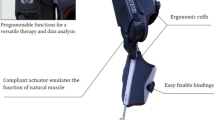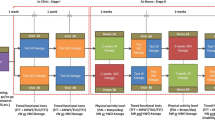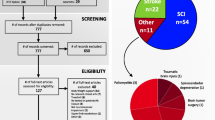Abstract
Impaired ability to walk independently is a significant consequence of multiple sclerosis (MS) resulting in substantial limitation in mobility and performance of daily activities, thus restricting full participation and home and community re-integration. Gait training/restoration in MS is necessary but often limited due to the progress and severity of the disease and limitations of traditional strengthening exercises Much attention has been emphasized in developing pharmaceutical treatment to stop or delay the progress of the disease, but not in developing rehabilitation strategies to improve quality of life and facilitate community re-integration for this population. Recently, wearable lower extremity robotic exoskeletons have been developed to restore ambulation in paralyzed or weak individuals with spinal cord injuries. Utilizing exoskeleton in MS rehabilitation may provident difference users experience and improve rehabilitation outcomes. The purpose of this paper is to provide preliminary results and early experience in our MS exoskeleton assisted rehabilitation program.
The study is partly supported by National Multiple Sclerosis Society (PI: Chang), TIRR Foundation, Memorial Hermann Foundation, and the University of Texas Health Science Center at Houston (UTHealth) Physical Medicine and Rehabilitation Departmental Funds.
Access provided by CONRICYT-eBooks. Download conference paper PDF
Similar content being viewed by others
Keywords
- Multiple Sclerosis
- Multiple Sclerosis Patient
- Expand Disability Status Scale
- Tibialis Anterior
- Training Protocol
These keywords were added by machine and not by the authors. This process is experimental and the keywords may be updated as the learning algorithm improves.
1 Introduction
Multiple Sclerosis is an autoimmune disease of the central nervous system resulting in progressive deterioration of health in young adults particularly aged 20−40. Significant gait impairment occurs as a result of motor weakness, spasticity, ataxia and sensory disturbance [1]. Many MS patients acquire a disturbing gait pattern and the capacity to walk significantly diminishes over time with one-third patients could not retain walking 20 years after diagnosis. Traditionally, persons with MS undergo various forms of rehabilitation including standard exercises as a therapeutic intervention [2] and treadmill training [3] for maintain and improving the overall health, however, the outcomes are inconclusive.
Wearable exoskeletons have been developed as assistive walking device for paralyzed or weak individuals suffered from SCI and stroke. It has become acceptable that wearable exoskeleton may provide opportunity for gait training following task specific training principle. In this study, we explore the feasibility of wearable exoskeleton assisted rehabilitation in MS.
2 Materials and Methods
2.1 Subjects
Four subjects with MS participated wearable exoskeleton assisted training during walking (5 session per week for 3 weeks). Subject characteristics are listed in Table 1. Subjects were recruited if they have diagnosed MS with Kurtzke Expanded Disability Status Scale (EDSS) score between 6−7.5. Subjects with severe and untreated spasticity, joint contracture, unhealed pelvic and limb fracture were excluded.
2.2 Exoskeleton Assisted Training
After screening for eligibility, subject will receive a total of 15 sessions of exoskeleton assisted training. The exoskeleton, Ekso ® (Richmond, CA) was used for this study (Fig. 1, left). During exoskeleton assisted walking, exoskeleton can adjust the level/amount of assistance provide to initiate and complete each step. At the beginning of the training, the exoskeleton was fitted according to the subject’s pelvic width and thigh and shank length per manufacture’s setting During training, the subject was trained to walk with Ekso and walker in various tasks: standing balance, slow and fast walking, turning, and sit-to-stand and vice versa. Subject’s perceived exertion was assessed by self-report using the Borg scale of perceived exertion during each training session.
2.3 Outcome Measures
Outcome measures were performed prior to training (pre-training: without exoskeleton) and right after training (post-training: with and without exoskeleton). Functional assessments included six minute walk test (6MWT) and 25 Feet Walk Test (25FWT, 7.62 m) at self-selected speed. The metabolic costs and muscle activation profile during 6MWT and 25FWT were assessed by measuring maximum rate of oxygen consumption (VO2 max, Cosmed k4b2) and EMG (Motion Lab Systems, Baton Rouge, LA), respectively (Fig. 1, center and right). EMG signals were measured and recorded from the right Rectus Femoris, Vastus Medialis, Bicep Femoris, Semitendinosus, Tibialis Anterior, Soleus and Gastrocnemius muscles.
2.4 Data Analysis
Values of VO2 max during 6MWT and 25FWT were calculated by averaging the breath-by-breath data. Mean EMG amplitude of each muscle was calculated in one gait cycle (heel contact and next heel contact of the right foot).
3 Results
The results were presented in Tables 2 and 3. Subjects walked with exoskeleton during 6MWT has less net oxygen consumption (comparison between walking with and without exoskeleton at post) regardless the total distance. Improved walking distance in 6MWT and walking speed (less time in 25FWT) after training (comparison walking without exoskeleton between pre and post) were also observed (except subject 3).
4 Discussion
The preliminary results suggest that wearable exoskeleton assisted training is safe and feasible for persons with MS.
Safety during wearable exoskeleton assisted training should be emphasized. According to our knowledge, there is no fall prevention strategy developed during exoskeleton assisted walking. We successfully used body weight support system (Fig. 1) for balance and fall prevention during training, in addition to physical assistance from a second staff member for one subject (subject 4) who could not use assistive devices for balance.
Our training protocol was designed to train subjects to utilize exoskeleton as assistive device. Therefore, the observed improvement in walking distance and speed were unexpected and could be resulted from increased amount of physical activity. Based on training principles, training protocol that aims to improve walking function should be designed to reach maximal therapeutic effects. Moreover, the success of the training protocol relies the experience of the trainer (therapist) and control software capability.
Furthermore, walking with wearable exoskeleton requires learning. The capability of motor control and learning plays critical role in efficient and effective exoskeleton assisted rehabilitation. Therefore, the training protocol should consider the variance among different patient populations, as MS patients suffer fatigue easily and may have impaired skill acquisition and retention capability.
5 Conclusion
Wearable exoskeleton assisted training is safe and feasible for persons with MS for gait training and mobility. Individualized training protocols that emphasize either gait training or mobility training should apply. Refining current technologies to design more user friendly device and flexible software control for this population should be considered.
References
Shakespeare, D.T., Boggild, M., Young, C.: Anti-spasticity agents for multiple sclerosis. Cochrane Database Syst. Rev. 4, CD001332 (2003)
Briken, S., et al.: Effects of exercise on fitness and cognition in progressive MS: a randomized, controlled pilot trial. Mult. Scler. 20, 382–390 (2014)
van den Berg, M., et al.: Treadmill training for individuals with multiple sclerosis: a pilot randomized trial. J. Neurol. Neurosurg. Psychiatry 77, 531–533 (2006)
Acknowledgment
We want to thank participants for their time and efforts.
Author information
Authors and Affiliations
Corresponding author
Editor information
Editors and Affiliations
Rights and permissions
Copyright information
© 2017 Springer International Publishing AG
About this paper
Cite this paper
Chang, SH., Kern, M., Afzal, T., Tseng, SC., Lincoln, J., Francisco, G. (2017). Wearable Exoskeleton Assisted Rehabilitation in Multiple Sclerosis: Feasibility and Experience. In: González-Vargas, J., Ibáñez, J., Contreras-Vidal, J., van der Kooij, H., Pons, J. (eds) Wearable Robotics: Challenges and Trends. Biosystems & Biorobotics, vol 16. Springer, Cham. https://doi.org/10.1007/978-3-319-46532-6_3
Download citation
DOI: https://doi.org/10.1007/978-3-319-46532-6_3
Published:
Publisher Name: Springer, Cham
Print ISBN: 978-3-319-46531-9
Online ISBN: 978-3-319-46532-6
eBook Packages: EngineeringEngineering (R0)





